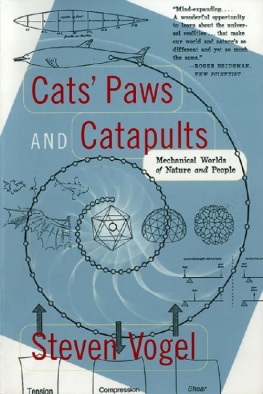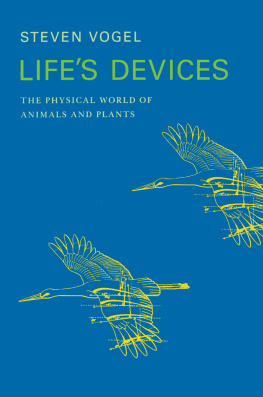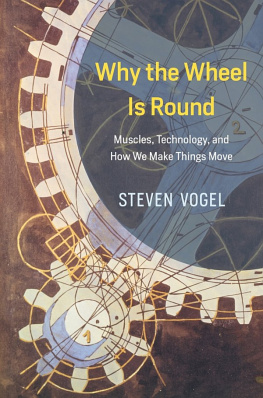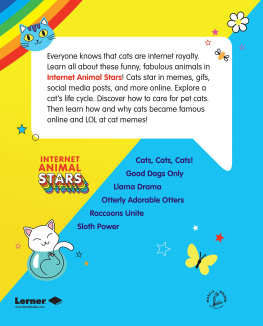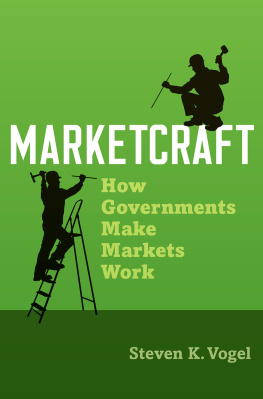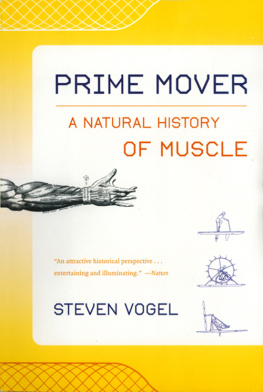Steven Vogel - Cats Paws and Catapults: Mechanical Worlds of Nature and People
Here you can read online Steven Vogel - Cats Paws and Catapults: Mechanical Worlds of Nature and People full text of the book (entire story) in english for free. Download pdf and epub, get meaning, cover and reviews about this ebook. year: 2000, publisher: W. W. Norton & Company, genre: Romance novel. Description of the work, (preface) as well as reviews are available. Best literature library LitArk.com created for fans of good reading and offers a wide selection of genres:
Romance novel
Science fiction
Adventure
Detective
Science
History
Home and family
Prose
Art
Politics
Computer
Non-fiction
Religion
Business
Children
Humor
Choose a favorite category and find really read worthwhile books. Enjoy immersion in the world of imagination, feel the emotions of the characters or learn something new for yourself, make an fascinating discovery.
- Book:Cats Paws and Catapults: Mechanical Worlds of Nature and People
- Author:
- Publisher:W. W. Norton & Company
- Genre:
- Year:2000
- Rating:3 / 5
- Favourites:Add to favourites
- Your mark:
- 60
- 1
- 2
- 3
- 4
- 5
Cats Paws and Catapults: Mechanical Worlds of Nature and People: summary, description and annotation
We offer to read an annotation, description, summary or preface (depends on what the author of the book "Cats Paws and Catapults: Mechanical Worlds of Nature and People" wrote himself). If you haven't found the necessary information about the book — write in the comments, we will try to find it.
Steven Vogel: author's other books
Who wrote Cats Paws and Catapults: Mechanical Worlds of Nature and People? Find out the surname, the name of the author of the book and a list of all author's works by series.
Cats Paws and Catapults: Mechanical Worlds of Nature and People — read online for free the complete book (whole text) full work
Below is the text of the book, divided by pages. System saving the place of the last page read, allows you to conveniently read the book "Cats Paws and Catapults: Mechanical Worlds of Nature and People" online for free, without having to search again every time where you left off. Put a bookmark, and you can go to the page where you finished reading at any time.
Font size:
Interval:
Bookmark:
C ATS PAWS
and
CATAPULTS
Mechanical Worlds of
Nature and People
STEVEN VOGEL
Illustrated by Kathryn K. Davis
with the author

W. W. NORTON & COMPANY
New York London
For Jane
Contents
L ife is what biologys about. Technology is something else altogether. Or so I believed before I got into a kind of biology thats about technology as well as life. More to the point, itbiomechanicslooks at the technology of life, at the mechanical world of nature. Sometimes that world resembles the mechanical world that we humans have created. But sometimes the two differ strikingly. This book compares those technologies. Its about the ordinary things and creatures around us; it intends, immodestly, to change the way you look at your surroundingsat least a little. It has some other missions as well.
Ive come to realize that engineers are as curious about our world as we are about theirs. Some suspect that a look at organisms might help them create designs and fabricate devices. How could a biologist disagree? But shifting from one world to the other isnt a trivial matter, and the traveler needs a road map and a guidebook. This book tries to provide them by introducing biomechanics in a point-by-point comparison with the more familiar world of our own technology.
At the same time I want to inject an element of sobriety into our romantic view of living things. The elegance of natural design seduced a lot of us into becoming biologists. Nature does what she does very well indeed. Butand heres the rubwhy should she do so in the best possible way? And why should she provide a model for what we want to do? I want to ruffle our tendency to view nature as the gold standard for design and as a great source of technological breakthroughs.
Beyond that, I want to argue that natural design provides no honest foil for skewering human technology. In getting together the material for this book, Ive repeatedly bumped into an antitechnological literaturenature-worshiping, engineer-bashing tracts. Its authors take a thoroughly unrealistic view of our contemporary situation and prospects and lay blame inappropriately; hanging the social consequences of technology on engineers amounts to hanging airport congestion on the Wright brothers.
About this last mission I cheerfully admit personal bias. I have no formal background in engineering and only a primitive knowledge of the underlying physics and mathematics. I couldnt have done what science and writing Ive done without the unfailing generosity and support of engineers. For nearly forty years, and at several institutions, theyve explained things, steered me out of cul-de-sacs, pulled my foot out of my mouth before I published nonsense, and suggested accessible source material; in short, theyve done everything imaginable to welcome me to their domain.
Doing this book has treated me to an intellectual feast. I indulged my fondness for building things by making a version of an ancient Egyptian drill, and I had a pretext to lay hands on (and read) the first book printed on paper derived from wood pulp. I had an excuse to use nine libraries on the Duke campus (and several elsewhere), not to mention interlibrary loans, CD-ROMs, government documents, various on-line databases, old newspapers on microfiche, and network news groups.
I remain daunted by the clear relevance and separate sophistication of anthropology, archaeology, paleontology, economics, architecture, geometry, geography, law, and the histories of science, technology, exploration, domestication, and culture. All the complex interconnections bring to mind the biomechanical problems of keeping your finger in the air while your ears to the ground and of keeping your feet on the ground while your heads in the clouds.
Ive drawn quite shamelessly on professional colleagues and other friends. In no other project have I received such a treasure of useful suggestions, ideas, and examples. Im especially indebted to Matthew Healy, Michael LaBarbera, Catherine Loudon, Jane Vogel, and Stephen Wainwright, each of whom read the entire manuscript in first draft and made copious but always kind and tactful suggestions. In addition, useful ideas emerged from conversations with David Alexander, Michael Blum, Richard Burian, Steven Churchill, Ruth Day, Martha Dunham, Betsey Dyer, Shelley Etnier, Robert Full, Margaret Hivnor, Diane Kelly, Peter Klopfer, Daniel Lieberman, Dan Livingstone, Anne Moore, M. Patricia Morse, Bruce Nicklas, Francis Newton, Fred Nijhout, George Pearsall, Charles Pell, Henry Petroski, Jeffrey Podos, Michael Reedy, Knut Schmidt-Nielsen, Kalman Schulgasser, John Sharpe, Robert Teer, Edward Tenner, Lloyd Trefethen, John Wourms, and many other people of whom I lack a proper list. Im grateful to a host of helpful librarians, especially Richard Hines and David Talbert.
Edwin Barber, my editor at W. W. Norton, has done more for my writing than anyone since my student days. In particular, he has given detailed guidance as well as general admonishment in the struggle for spontaneity and the battle against academic pretentiousness and obfuscation.
Finally, Id like to pronounce words of passionate appreciation and advocacy for libraries where what you needor dont know you need until you see itsits on end useraccessible shelves. Or their electronic equivalents.
Several of the figures derive from previously published material. For permitting redrawing, I gratefully acknowledge the following copyright holders. Figure 2.4: Columbia University Press (Fig 8.5 of B. D. Dyer and R. A. Obar, Tracing the History of Eucaryotic Cells); Figure 4.15: Academic Press, Inc. (Fig. 2 of J. T. Finch and A. Klug, J. Mol. Biol. 15: 344 and Fig. 5.4 of R. E. F. Matthews, Plant Virology. 3rd ed.); Figure 5.12: Dr. Mimi Koehl (Figure 1-9 of Duke University Ph.D. dissertation); Figure 8.4, American farm and Darrieus rotor windmills: Van Nostrand- Reinhold, Inc. (Figs. 22, 42 of F. R. Eldridge, Wind Machines, 2nd ed.); Figure 10.10: Dr. Vance A. Tucker (Cover, Science, 14 Nov. 1969); and Figure 13.3: John Wiley and Sons, Inc. (Fig. 5.19 of M. E. Rosheim, Robot Evolution). For permitting direct copying of Figures 11.1 and 13.2, I acknowledge the copyright holders, Gordon and Breach Scientific Publishers, Inc. (Fig. 27 of J. Kastelic et al., Connective Tissue Research 6: 11) and Dr. William M. Kier (Fig. 11 of Duke University Ph.D. dissertation), respectively. For allowing redrawing of the mollusk shell of Figure 6.8 (from S. W. Wise and W. W. Hay, p. 427 in Trans. Amer. Micr. Soc. 87), I thank Dr. Vicki Pearse, editor, Invertebrate Biology. For loaning the Arctium for Figure 12.12, I thank Dr. Robert Wilbur, director, Duke University Herbarium. Sam (Soft and Mellow) Cat suggested the titles feline allusion; he never confuses the mouse of one technology with that of the other and remains ever hopeful that the printer will emit something better than paper.
STEVEN VOGEL
Durham, North Carolina
CATS PAWS
and
CATAPULTS
W hen some of us were much youngerfor me the late 1940swe read Flash Gordon every Sunday in the comics. With the casual confidence of kids, we assumed that space travel to extraterrestrial civilizations was just around the corner. Mr. Gordon seemed as close to our world as George Washington and a lot closer than Julius Caesar. While Star Trek, with Mr. Spock, is leagues ahead of Flash Gordon in sophistication, reaching other beings has become a much dimmer prospect. At faultis neither the loss of our youthful certitude nor any inferiority of Spock to Gordon. Whats happened is that the arrival of the space age, like anyreality, has brought its potion of sobriety, its diminution of innocence. Space travel has proved a lot trickierand more expensiveand extrater-restrial civilizations a lot more remote than we ever imagined.
Next pageFont size:
Interval:
Bookmark:
Similar books «Cats Paws and Catapults: Mechanical Worlds of Nature and People»
Look at similar books to Cats Paws and Catapults: Mechanical Worlds of Nature and People. We have selected literature similar in name and meaning in the hope of providing readers with more options to find new, interesting, not yet read works.
Discussion, reviews of the book Cats Paws and Catapults: Mechanical Worlds of Nature and People and just readers' own opinions. Leave your comments, write what you think about the work, its meaning or the main characters. Specify what exactly you liked and what you didn't like, and why you think so.

